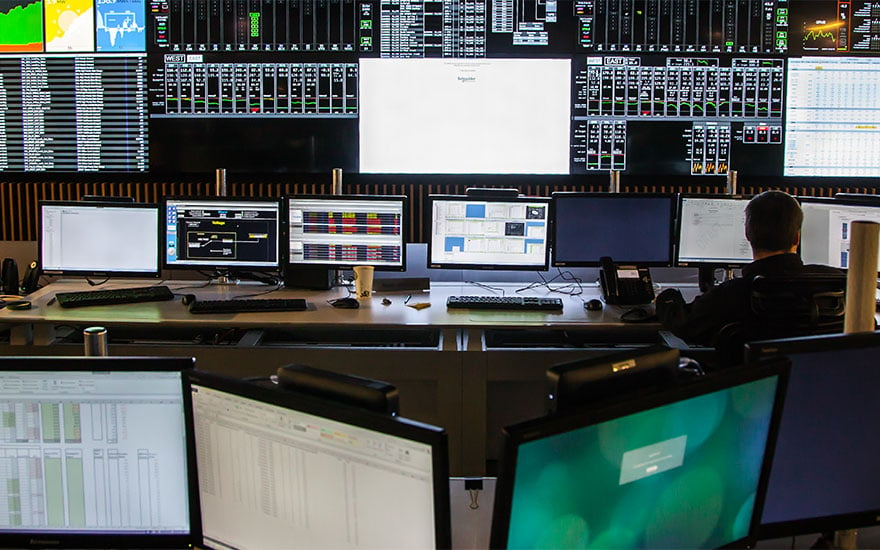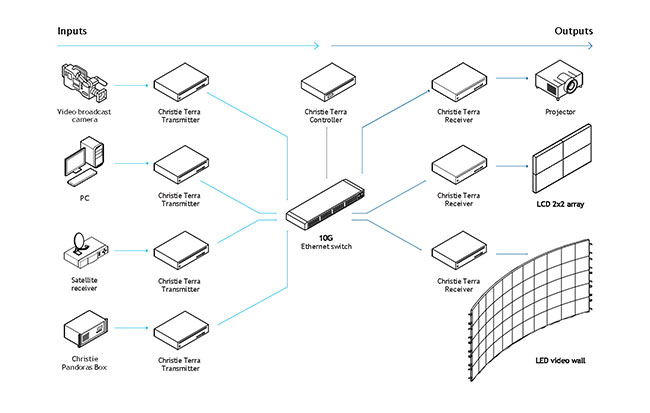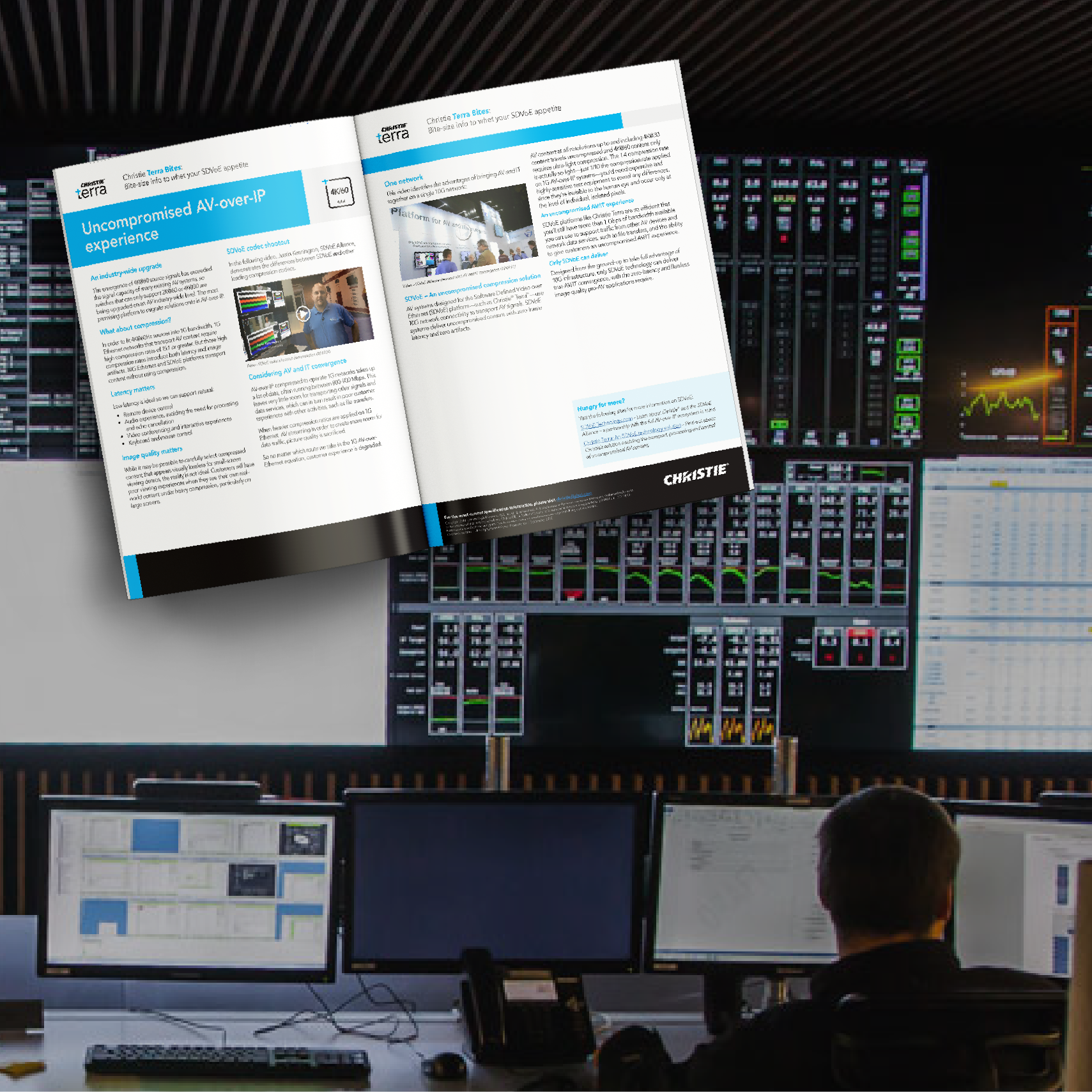What is AV over IP, why it matters, and how it benefits you
Key takeaways:
- AV over IP (Audio Visual over Internet Protocol) is a modern solution for transmitting AV signals over standard network infrastructures like Ethernet using IP technology
- This replaces traditional systems with a scalable, flexible, and cost-effective approach, making it ideal for environments like schools, corporations, and control rooms
- Artifact-free, zero-latency 4K video at 60Hz, along with native support for video walls, multi-viewer functionality, and KVM control.
- Supports thousands of endpoints, far surpassing the limitations of traditional matrix-based systems.
- Leverages off-the-shelf 10G Ethernet components, offering superior quality and functionality at a lower cost than proprietary systems.
- From surgical research institutes to large-scale projection mapping projects, AV over IP provides robust and versatile solutions for various industries.
Let’s start at the beginning. AV over IP, or Audio Visual over Internet Protocol, is a method of distributing and managing AV signals over standard network infrastructures, like Ethernet, using IP.
SDVoE-based AV over IP systems offer a standardized approach to signal transport across participating manufacturers based on a common chipset to ensure interoperability. (Christie is a founding member of the SDVoE Alliance.)
While it’s no longer the new kid on the block, AV over IP improves upon dedicated cabling systems like HDMI, VGA, and SDI by creating a scalable, flexible, cost-effective solution for AV content management.
As a result, it’s an excellent solution for projects that need to distribute audio visual signals across a network, like schools, corporations, and control rooms.
Let’s take a closer look at how SDVoE-based AV over IP systems work and their benefits, including scalability, performance, and value.
Understanding How AV Over IP Works
AV over IP was widely adopted over a decade ago as network infrastructures, like 10G Ethernet, became faster and more affordable. With improved infrastructure, high-definition video, low-latency audio, and control signals can be transmitted across a network.
Before the introduction of AV over IP, AV system designs share similar requirements, including support for a range of formats, extensions and switching, support for HDCP-encrypted signals, video processing functions, and, in some cases, KVM (keyboard, video, and mouse) control.
However, signals and system processing required an increasing amount of bandwidth, which challenged legacy systems. The solution? Software Defined Video over Ethernet (SDVoE). It runs on 10G Ethernet, simplifies system design, is highly scalable, and — drumroll, please! — is cost-effective.
For example, an SDVoE-based AV over IP system can include three components: transmitter, receiver, and controller. Using those components, a typical workflow looks like this:
- Source devices are connected to transmitters. The transmitter converts the AV signals from the source devices into packets of data and sends them over the 10G network via a 10G Ethernet switch to the receiver.
- The receiver decodes the packets and signals and outputs them onto displays, through audio systems, or both.
- A controller is used to configure, program, manage, and operate the system.
The benefits of an SDVoE-based system
We mentioned this earlier, but it bears repeating: SDVoE systems perform better than traditional matrix-based systems. Because they use off-the-shelf components, these systems are both scalable and cost-effective.
Performance
AV systems are often required to transmit 4K content, so the ability to transport artifact-free, zero-latency 4K at 60 Hz video content is a key performance advantage of 10G SDVoE systems compared to 1Gbit network solutions.
Christie RGB pure laser projectors and Terra AV-over-IP deliver robotic surgery learning at IRCAD

SDVoE networks also natively support video wall scaling, multi-viewer, and KVM functions, which aren’t standard in traditional AV switching and distribution systems.
Systemwide EDID management and AV signal processing features add to the performance advantages by making system integration much more efficient. If that wasn’t enough, SDVoE switches ship pre-configured for simple plug-and-play integration and setup.
Scalability
Proprietary AV switchers have limits on the number of inputs and outputs that can be supported in their base product designs.
This is due to the performance limits of electronic components, costs, and practical design considerations. IEEE 802.3 Ethernet standards have created a market environment where many manufacturers can produce interoperable switching equipment that allows systems to scale up efficiently and support system sizes far beyond 1,000 endpoints.
They can be expanded and built up over time, growing as new requirements emerge.
"…signals and system processing required an increasing amount of bandwidth, which challenged legacy systems. The solution? SDVoE. It runs on 10G Ethernet, simplifies system design, is highly scalable, and – drumroll, please! – is cost-effective.” - Bill Zhu, director of product management, Christie
Conversely, since 1Gbit networks use compression to stream AV content, there’s no bandwidth to expand the system to support higher resolution standards or formats.
As an added benefit, unlike proprietary AV matrixes, all SDVoE-compliant products, regardless of manufacturer, are interoperable, meaning designers have flexibility in choice and performance capabilities when specifying systems.
Affordability
Based on affordable and readily available off-the-shelf 10G Ethernet components and a broad set of video processing and control capabilities, SDVoE systems can cost far less than traditional AV system designs and provide far better quality, performance, and capabilities than 1Gbit solutions.
From a globally recognized research institute to projection mapping onto a castle, an SDVoE-based system delivers a robust solution for projects of all shapes and sizes.
Do you have questions about AV over IP? We have answers!
Contact us or check out some of the resources linked below.





